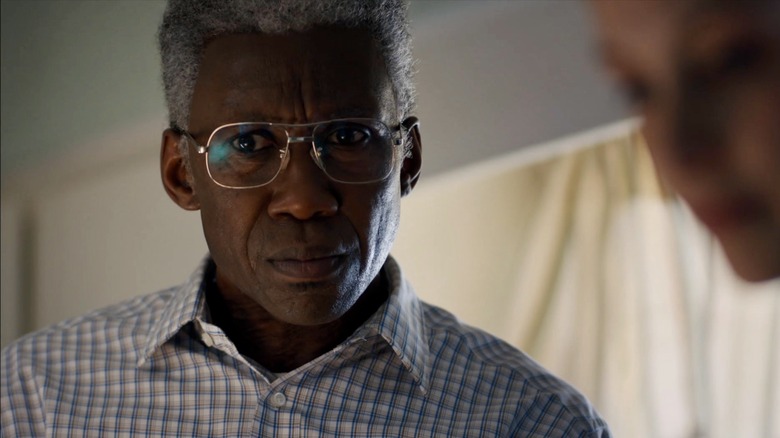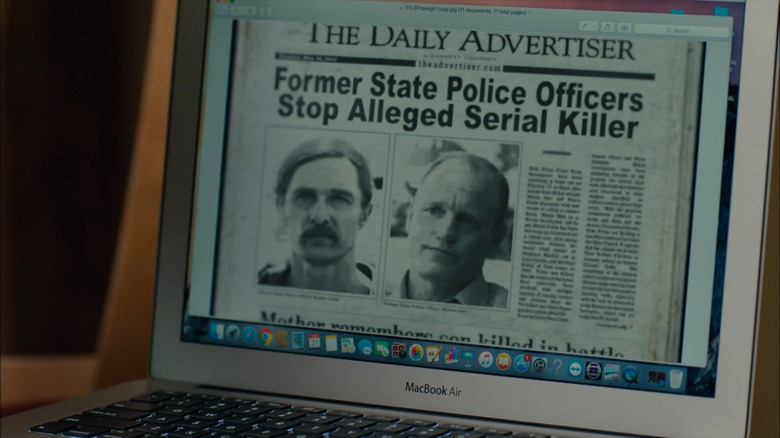Why True Detective's Creator Tied Seasons 1 And 3 Together
Early in the third season of HBO's "True Detective," fans and Redditors perked up at the mention of a "crooked spiral," which the fictional true-crime documentarian Elisa Montgomery (Sarah Gadon) connected to the straw dolls found in the forest near a dead body at the end of the first episode. After Will and Julie Purcell go missing, the boy is discovered in a praying pose, and Montgomery suspects his death is part of a larger conspiracy. "There's a web forum that posts about real-life criminal cases, things that are unsolved or unresolved," she explains to retired detective Wayne Hays (Mahershala Ali). "They have a whole section on the Purcell case," and "they go in lots of directions."
This dialogue could just as easily be describing the online theorizing that arose out of "True Detective" season 1, as viewers became obsessed with the show and its references to the Yellow King and Carcosa, names drawn from weird fiction that lent the season a veneer of cosmic horror. That aspect of "True Detective" ultimately proved to be more background shading, however, and Montgomery was seen as something of a later nod to the type of armchair detective for whom speculation becomes more interesting than cold hard facts. In an interview with Esquire for "True Detective" season 3, series creator Nic Pizzolatto said:
"It's not quite that meta, I think, but definitely one of [Montgomery's] functions was to serve as a speculator. Wayne's talking to her fundamentally to tease out the information that she might know. And once he realizes that she doesn't know about what he did or about Julie Purcell's ultimate fate, he's stumped. It was also a way of acknowledging that we recognize that Yellow King story possibility. Like, it could have been that, but we're not interested in that."
'It was something like fan service'
In its penultimate episode, "True Detective" season 3 goes beyond that passing mention of the "crooked spiral" and delivers up a much bigger Easter egg where we see a news story on Montgomery's laptop with photos of Rust Cohle and Marty Hart, the characters played by Matthew McConaughey and Woody Harrelson in the first season. "In 2012, two former Louisiana State Police stopped a serial killer associated with some kind of pedophile ring," Montgomery tells Hays. "Despite evidence of accomplices, the case never went wider."
This draws an explicit connection between the first and third season of "True Detective," establishing that they take place within the same shared television universe, even if the cases being investigated aren't connected in any way beyond Montgomery's imagination. Nic Pizzolatto explained: "For me, it was something like fan service but with the point of saying that this is all one universe and that these things coexist. It has that connection, but at the same time also saying this story is not that story."
Montgomery says, "I think what happened to the Purcell children was connected to a similar group," and if you think she's onto something, the show allows for that interpretation. Yet it also makes it clear that its police protagonists aren't going to be able to unravel the whole conspiracy, if there is one. They have to settle for smaller victories, much like "True Detective" season 3, which was able to restore the series to critical favor after a spotty second season.

